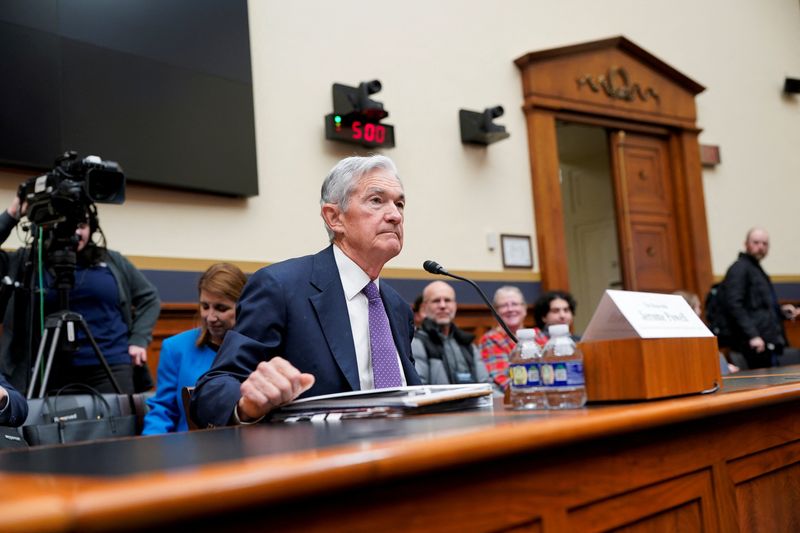
By Michael S. Derby
NEW YORK (Reuters) – Over two days of testimony this week before Congress, Federal Reserve Chairman Jerome Powell indicated there’s no imminent end to the central bank’s balance sheet wind down process, as some banks have moved to push back their own end date for a process commonly referred to as quantitative tightening.
“I think we have a ways to go” on reducing the size of central bank bond holdings and there are no signs yet that market liquidity has shrunk enough to affect the Fed’s reduction in holdings of Treasury and mortgage bonds, Powell told a House panel Wednesday.
Powell’s observations on quantitative tightening, or QT, comes as the Fed has shed just over $2 trillion from its holdings. The Fed is seeking to extinguish liquidity it added to markets during the COVID-19 pandemic, when it bought trillions in bonds to stabilize markets and goose economic growth by lowering longer term borrowing costs.
Since the Fed began QT it has been seeking to reduce overall market liquidity, most clearly measured in the level of bank reserves, to levels that allow for normal levels of money market interest rate volatility, while allowing the Fed firm control over the federal funds rate, its main tool to influence the momentum of the economy.
The Fed is also trying to avoid a replay of the events of September 2019 when, during its last chapter of QT, too much liquidity got taken out of the system, requiring the Fed to start adding it back in aggressively.
The Fed has taken a number of steps to avoid this happening again, like slowing the pace of its drawdown and setting up new liquidity facilities, while providing more guidance about the factors it is watching. But it has struggled to offer much guidance about when it can stop QT, except to say that day doesn’t appear imminent.
Over recent days, some banks have pushed back their QT endgame estimates relative to the most recent consensus, which eyed a June stop date.
“Recent communication suggests that the Fed is content to let QT continue to run despite the potential for low visibility into reserve demand over the coming months due to debt limit dynamics,” economists at Goldman Sachs said in a report Friday.
Bank forecasters said that while they’d expected the Fed to wind up the drawdown at the end of the second quarter, now they see that happening at the close of the third quarter, with Treasury bond run off stopping at the end of the second quarter and mortgage run off ended by the third quarter.
Morgan Stanley economists also kicked the QT can down the road.

